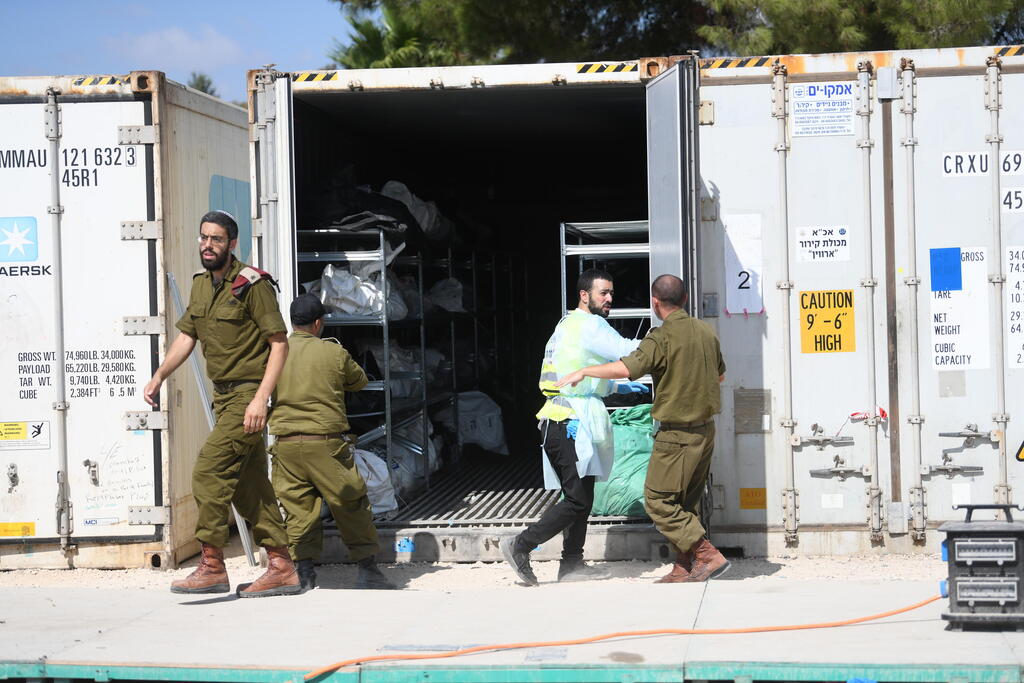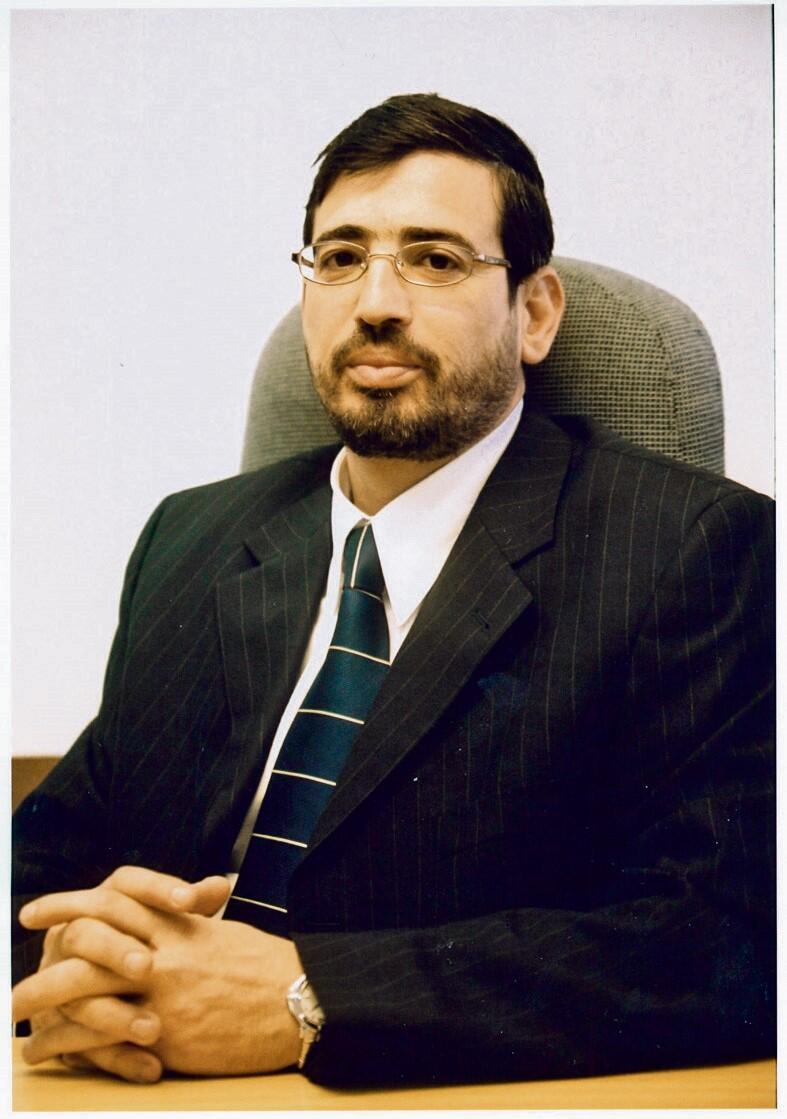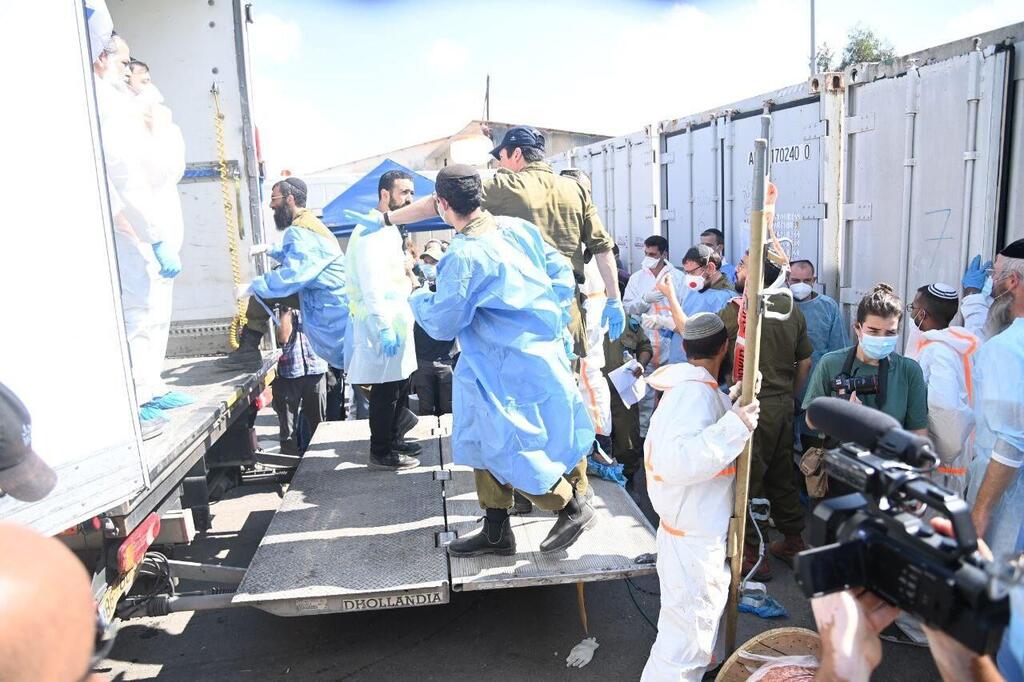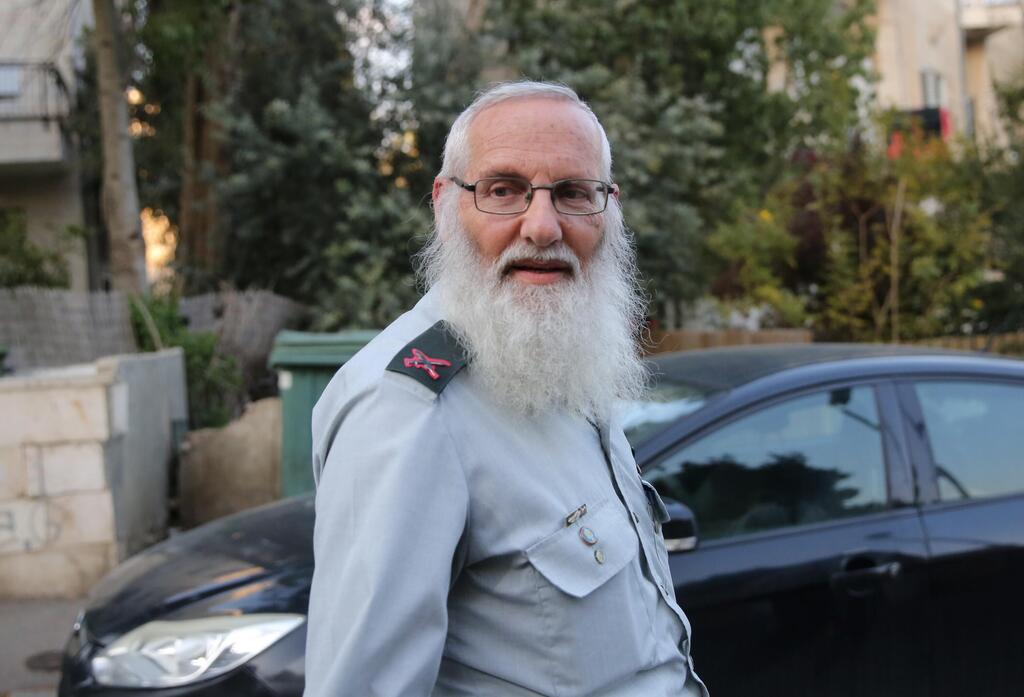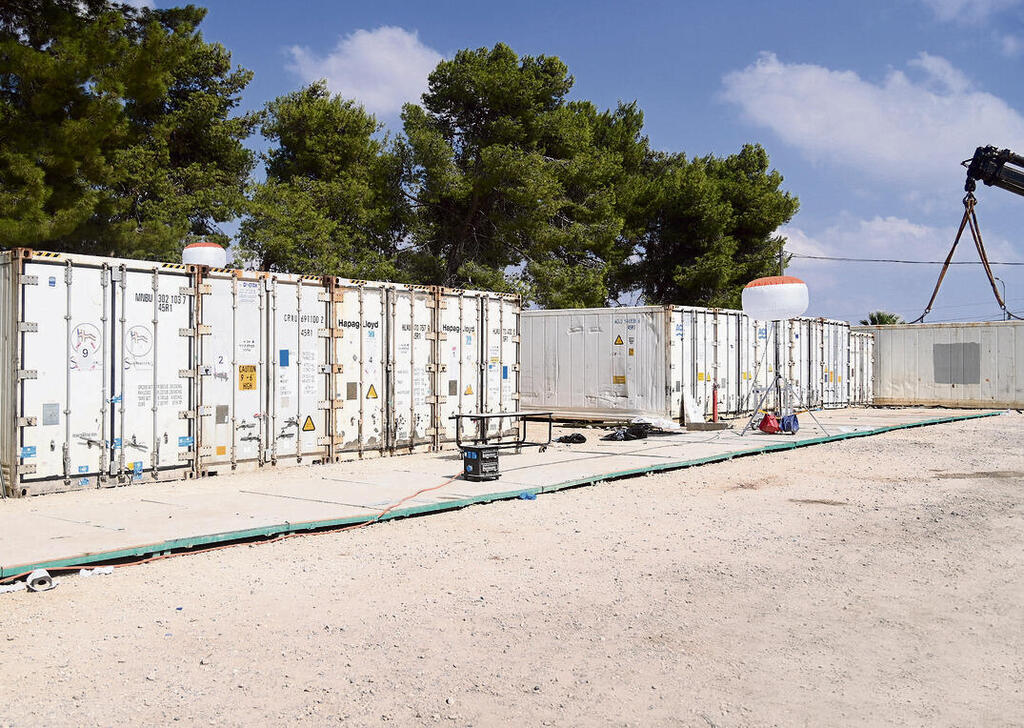At the heart of the camp Shura, the headquarters of the Military Rabbinate near Ramla, lies the "Zvi Center," designated as the "National Center for the Treatment of Fallen Soldiers of Israel." This facility includes several refrigerated containers for storing bodies and laboratories equipped with various technologies for identification and documentation, such as DNA sampling, CT scanners, dental imaging, and more. The bodies of soldiers who fall during their service are brought to this center for definitive identification.
Shura is a relatively new camp, inaugurated about four years ago. The Zvi Center was designed to handle the sorting, documentation, and identification of fallen soldiers even in extreme scenarios, such as a war or a large-scale operational accident with many casualties. However, none of the base's planners imagined that one day, the Zvi Center would be overwhelmed by the sheer number of bodies brought to it.
This is precisely what happened on the morning of October 7 and in the days and weeks that followed. In addition to soldiers, police officers, and security personnel who fell in the battles of that Saturday, the bodies of hundreds of civilians who were murdered began to arrive at camp Shura. The metal shelves inside the refrigerated containers at the Zvi Center quickly filled with body bags. Additional refrigerated containers were brought in and arranged in a long row near the entrance to the base to accommodate the civilian casualties. This new section was called the "Batzar Compound," named after Colonel (Res.) Hod Batzar, who volunteered to oversee this demanding task. The containers in the Batzar Compound also quickly filled with body bags, which continued to arrive.
All of these bodies, many of which were in poor condition, needed to be documented and identified: who was a civilian, who was a soldier, and who—differentiating as necessary—was a terrorist whose body had mistakenly arrived at camp Shura (bodies of confirmed terrorists were sent to refrigerated containers at the Sde Teiman base). It quickly became clear that the Military Rabbinate could not handle the volume of bodies alone.
The Ministry of Religious Services, responsible for civilian burials, together with the IDF, the security forces, the police, the Ministry of Health, and the National Institute of Forensic Medicine, launched an unprecedented operation to sort and identify the bodies. Soldiers from the base, reinforced by Home Front Command soldiers, reservists, police officers, and volunteers, worked around the clock to deal with a scenario for which neither they nor the base had been prepared: the identification and sorting of hundreds of bodies at once. It was a sorrowful but crucial and sacred task. Some of the bodies were in such poor condition that they required complex investigative procedures, including repeated DNA sampling and other advanced technological methods. This explains why some families only received the devastating news about their loved ones long after that Saturday.
Hundreds of body bags with remains have yet to be identified
As the weeks passed, the containers that had been filled on October 7 gradually emptied. The last families who had yet to learn the fate of their loved ones finally received the news: those whose remains had been identified were transferred for burial, while those who could not be identified were declared missing and later classified as either hostages or fallen hostages. Officially, the identification operation for the October 7 victims at the Shura was declared complete.
However, our investigation reveals that this is only an appearance: as of this week, a year and a half after the massacre, two containers from October 7 remain at the Shura, containing hundreds of body bags with remains that have yet to be definitively identified.
The Chief Military Rabbi and the office of the Chief Rabbi of Israel have requested an additional round of DNA testing to identify the remains. The IDF has even allocated a special budget for the renewed testing of these body bags. But as of this week, the process remains stalled. The reason: the authority to order these tests lies with the Ministry of Religious Services, and its director-general, Yehuda Avidan, supported by the opinion of Dr. Chen Kugel, the head of the National Institute of Forensic Medicine, opposes re-testing all the body bags. The ministry instead proposes burying the unidentified remains in a mass grave.
As a result, several hundred body bags containing remains from October 7—possibly including Israelis—remain unidentified. "There is no greater agony for a bereaved family than discovering that parts of their loved ones were buried together with a Hamas terrorist,” said a source familiar with the matter. The Ministry of Religious Services responded, "We operate according to professional criteria." Meanwhile, the plastic body bags sit on metal shelves in the refrigerated containers at camp Shura, awaiting a decision.
Many of the bodies arrived incomplete
At the peak of operations after October 7, camp Shura—both in the civilian Batzar Compound and the military Zvi Center—contained dozens of refrigerated containers, each with hundreds of body bags. Each bag represented a body or, at least, what collection teams in the field initially believed to be a single body. In some cases, it was later discovered that the body bags contained remains from multiple individuals. The most extreme case occurred about a year ago when the remains of Eliakim Libman, a security guard from the Nova music festival who had been considered a hostage, were found in the grave of Victoria Gorlov, another security guard from the same event. The mistake caused immense grief for both families: one had to reopen their daughter’s grave, while the other spent months not knowing their son’s fate due to an identification error.
Such errors are precisely what camp Shura is trying to prevent. The Military Rabbinate has established strict identification protocols. When a body arrives, it is often identifiable through relatively simple means, such as a military dog tag, an ID card, tattoos, jewelry, scars, or birthmarks. In all cases, DNA samples are taken—an operation referred to as "sampling." Each sampling is conducted twice to ensure accuracy, in case one test fails to produce a complete DNA profile. Additionally, other identification methods, such as fingerprints, dental records, or CT imaging, are used to cross-check and confirm identities. At least two definitive identification methods are required to declare a body (or part of it) identified.
October 7 was unique not only due to the unprecedented number of victims but also because many of the bodies arrived incomplete. Some were so damaged that creating a full DNA profile was impossible. In such cases, investigators relied on the location of the remains, identification of others nearby, and, if necessary, repeated DNA testing.
The identification process at Shura progressed, and the containers emptied, but not completely. Two containers still hold approximately 350 body bags, at least 200 of which are believed to contain identifiable remains. Further concerns arose six months ago when it was discovered that the refrigerated containers at the Sde Teiman base—intended solely for terrorist bodies—accidentally contained remains of Israelis. Following this, the Military Rabbinate re-sampled 1,660 body bags at Sde Teiman, confirming that some indeed contained Israeli remains.
This discovery alarmed the Military Rabbinate, prompting calls for further testing of the remaining body bags at Shura. The Chief Military Rabbi, Brigadier General Eyal Karim, has determined that a renewed testing operation must be conducted to conclusively identify the remains and ensure proper burial. However, the operation has been delayed due to bureaucratic disagreements, with the Ministry of Religious Services opposing the initiative.
As the debate continues, the body bags remain in cold storage, awaiting a resolution.
The Military Rabbinate recognized that if the Chief Rabbi of Israel ruled to reexamine the contents of the containers, the Ministry of Religious Services would find it difficult to oppose the authority of the highest halachic body. The letter written by Brigadier General Karim to the Chief Rabbi of Israel, the Rishon LeZion David Yosef, was explicit: "Given that findings of Jewish remains were discovered in the containers at Sde Teiman, and in light of the high suspicion that some of the contents may include parts of Jews (requiring burial), we wish to sample the containers to eliminate any doubt. We turn to the rabbi to issue a ruling on this matter and determine whether, from a halachic perspective, there is a need to sample these containers or not."
Chief Rabbi ruled - no action has been taken
When Yehuda Avidan, the Director-General of the Ministry of Religious Services, learned of this letter, he was furious. He viewed it as an attempt by the military to "appropriate" the findings of the containers, even though the responsibility for them lay with him. However, from a halachic standpoint, the ruling of the Chief Rabbi is binding. To make his decision, the Chief Rabbi was presented with various materials, past rulings, and other relevant information. Sources within the joint committee argue that the Chief Rabbi was provided with partial and incomplete information.
At the end of March, relying on halachic sources that state "it is an obligation to bring every part of a Jewish body to burial in a Jewish grave," Rabbi David Yosef ruled, "Every possible effort must be made, including repeated sampling and advanced testing, to verify the identity of the findings and ensure they are brought to a Jewish burial. I rule that there is an absolute obligation to conduct the necessary sampling as soon as possible to fulfill the mitzvah of honoring the dead and bringing them to a Jewish burial."
Yet, more than a month has passed since the Rishon LeZion’s ruling, and no action has been taken. The Director-General of the Ministry of Religious Services continues to oppose the move, and he is not alone. Supporters of his position on the committee responsible for deciding the matter argue that in cases of mass-casualty disasters, it is not feasible to repeatedly sample every single finding. They also claim that mass graves containing unidentified body parts are a common practice worldwide. A source within the committee stated, for instance, that containers are holding four individual bone fragments weighing a total of 50 grams. According to him, such a container, already sampled twice, has no reason to be sampled again unless the goal is to provide work and funding for the IDF’s identification labs.
On the other hand, sources familiar with the details said this week that Director-General Avidan explained that he does not want to cause additional pain to the families. However, they argue that the real reason is slightly different: the Ministry fears the uproar that would ensue if it were revealed that body parts of murdered Israelis had not been identified and brought to burial until now—and, even worse, that these parts had been stored in a container for a year and a half alongside the bodies of their murderers.
"They are afraid they will now have to approach the families and inform them that after a year and a half, remains of their loved ones have been found sitting on the side all this time," said a source involved in the matter. "Imagine what would happen if a family discovered that an attempt was made to hide the fact that parts of their loved one were not laid to rest or that DNA tests were not conducted because someone opposed it," added another source.
In any case where parts of already-buried Israelis are identified, the procedure is to contact the family to inform them. The family then decides whether and how to reopen the grave of their loved one. In any case, such a step is dramatic and can cause significant pain and sorrow.
Some also claim that, as expected, politics is playing a role in this struggle. Director-General Avidan is a key and powerful figure in Shas, very close to Aryeh Deri, and the brother of Health Minister Uriel Busso. Other sources we spoke with this week attribute the possible reason for the conflict to internal Shas rivalries within the Yosef family leadership. Here’s a summary: Director-General Yehuda Avidan is aligned with Yitzhak Yosef, the previous Chief Rabbi of Israel, who was succeeded last year by his brother, David Yosef. Between Yitzhak and David, there is personal rivalry: Yitzhak did not support his brother David’s candidacy for the position, and the tension between them often manifests in political questions about Shas leadership and halachic matters. The conflict became public this year when Rabbi David Yosef, addressing the issue of drafting Haredim, said, "We are not leaving this country; we are not going anywhere." This statement contradicted an earlier statement by his brother, Rabbi Yitzhak Yosef, who had said that if yeshiva students were forcibly drafted, "We would leave the country." Director-General Avidan quickly backed Rabbi Yitzhak’s words, declaring, "If I am given the order—I will leave the country."
Within Shas, according to these sources, Avidan is attempting to show Rabbi David Yosef that he is the decision-maker and that the Chief Rabbi has no authority in the matter. "A total eclipse," described sources closely involved in the case. The Ministry of Religious Services this week denied any connection between the brothers’ rivalry and the issue at hand.
Conversely, opponents of the sampling operation claim that the Military Rabbinate is cynically using the bodies of the murdered, disguising their motivations with moral arguments while ultimately seeking to provide work and advance their identification labs.
"We may never know to whom all the remains belong"
Meanwhile, the question of what is in the containers at camp Shura remains unresolved. If the Military Rabbinate’s position, backed by the halachic ruling of the Rishon LeZion, prevails, another sampling operation will be conducted on all the containers. "If the bags are checked, more remains of murdered Israelis will surely be found," said a source involved in the matter. If the committee adopts Avidan’s position, supported by the opinion of Dr. Kugel, some of the containers will be interred in mass graves, and it is possible we may never know to whom all the remains in the last two containers from October 7 belong.
The Ministry of Religious Services responded: "From the first day of the 'Iron Swords War,' the Ministry has handled all war casualties with immense sensitivity toward the deceased and their families, without publicity or public relations campaigns, based on the belief that the families’ honor and grief are the most important considerations.
"Regarding the claims: All body bags, without exception, have been handled by the National Center of Forensic Medicine and the Israel Police professionally. All tests conducted are properly documented by professional authorities.
"As we have done so far, the entire identification process of the deceased is being conducted in cooperation with the Ministry of Religious Services, the Ministry of Health, the National Center of Forensic Medicine, and the Israel Police, with sensitivity and professionalism. This matter will continue to be handled in the same manner, including preparations currently underway for additional testing under professional criteria.
Get the Ynetnews app on your smartphone: Google Play: https://bit.ly/4eJ37pE | Apple App Store: https://bit.ly/3ZL7iNv
"There is and has never been any dispute with the Rishon LeZion, Rabbi David Yosef, who is the highest halachic authority, and we are all subject to his halachic rulings. This has always been the case and will continue to be so. Rabbi Yitzhak Yosef has never been involved in this matter, so any claim linking the issue discussed in the article to him is baseless. The Ministry of Religious Services will continue to handle the deceased with the required sensitivity, as it has done so far."
IDF Spokesperson’s Unit stated: "The sole authority for decision-making regarding the treatment of the containers at Shura lies with the state’s authorized bodies. IDF will act following any decision they make."


